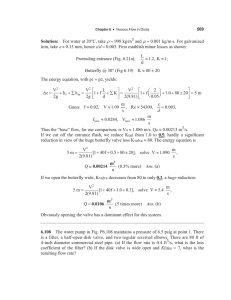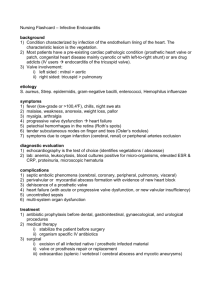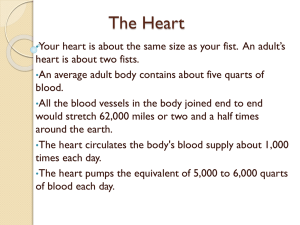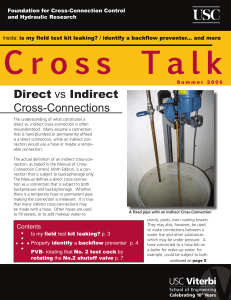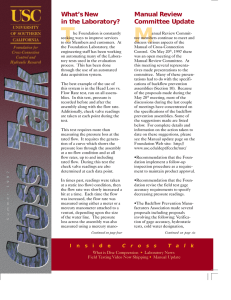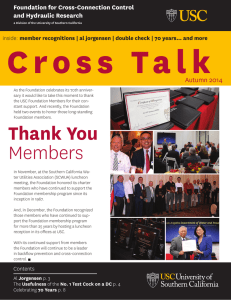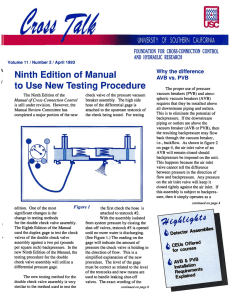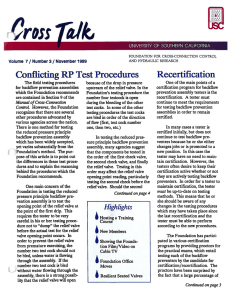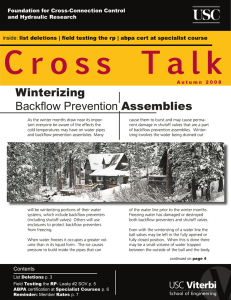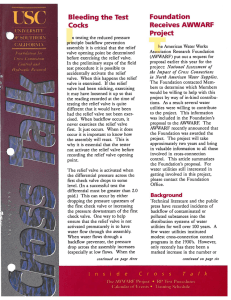Foundation for Cross-Connection Control and Hydraulic Research
advertisement
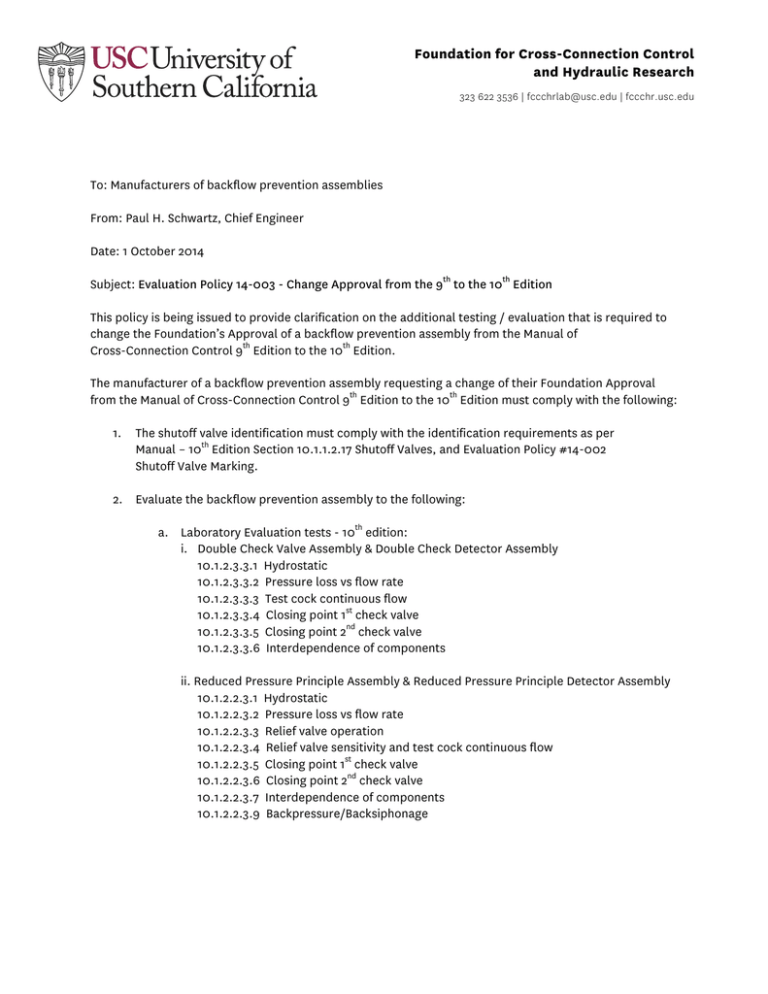
Foundation for Cross-Connection Control and Hydraulic Research 323 622 3536 | fccchrlab@usc.edu | fccchr.usc.edu To: Manufacturers of backflow prevention assemblies From: Paul H. Schwartz, Chief Engineer Date: 1 October 2014 Subject: Evaluation Policy 14-003 - Change Approval from the 9th to the 10th Edition This policy is being issued to provide clarification on the additional testing / evaluation that is required to change the Foundation’s Approval of a backflow prevention assembly from the Manual of Cross-Connection Control 9th Edition to the 10th Edition. The manufacturer of a backflow prevention assembly requesting a change of their Foundation Approval from the Manual of Cross-Connection Control 9th Edition to the 10th Edition must comply with the following: 1. The shutoff valve identification must comply with the identification requirements as per Manual – 10th Edition Section 10.1.1.2.17 Shutoff Valves, and Evaluation Policy #14-002 Shutoff Valve Marking. 2. Evaluate the backflow prevention assembly to the following: a. Laboratory Evaluation tests - 10th edition: i. Double Check Valve Assembly & Double Check Detector Assembly 10.1.2.3.3.1 Hydrostatic 10.1.2.3.3.2 Pressure loss vs flow rate 10.1.2.3.3.3 Test cock continuous flow 10.1.2.3.3.4 Closing point 1st check valve 10.1.2.3.3.5 Closing point 2nd check valve 10.1.2.3.3.6 Interdependence of components ii. Reduced Pressure Principle Assembly & Reduced Pressure Principle Detector Assembly 10.1.2.2.3.1 Hydrostatic 10.1.2.2.3.2 Pressure loss vs flow rate 10.1.2.2.3.3 Relief valve operation 10.1.2.2.3.4 Relief valve sensitivity and test cock continuous flow 10.1.2.2.3.5 Closing point 1st check valve 10.1.2.2.3.6 Closing point 2nd check valve 10.1.2.2.3.7 Interdependence of components 10.1.2.2.3.9 Backpressure/Backsiphonage Page 2 iii. Pressure Vacuum Breaker Assembly 10.1.2.4.3.1 Hydrostatic 10.1.2.4.3.2 Pressure loss vs flow rate 10.1.2.4.3.3 Test cock continuous flow 10.1.2.4.3.4 Air inlet opening point 10.1.2.4.3.5 Check valve closing point 10.1.2.4.3.6 Interdependence of components iv. Spill Resistant Pressure Vacuum Breaker Assembly 10.1.2.8.3.1 Hydrostatic 10.1.2.8.3.2 Pressure loss vs flow rate 10.1.2.8.3.3 Test cock continuous flow 10.1.2.8.3.4 Air inlet opening point 10.1.2.8.3.5 Check valve closing point 10.1.2.8.3.6 Interdependence of components b. Field Evaluation is not required 3. Evaluate bypass assemblies for DCDA & RPDA assemblies a. Item No. 1 above – Marking compliance b. Item No. 2.a.i or 2.a.ii above
